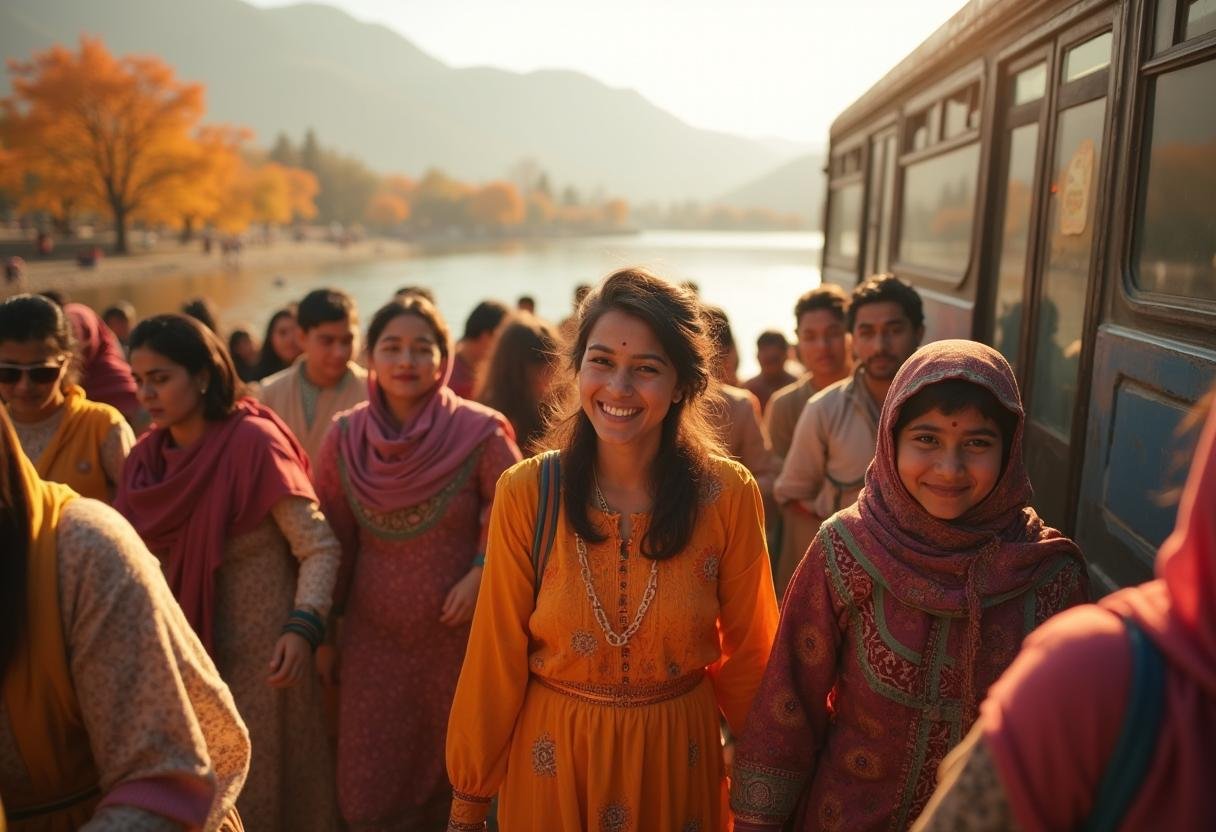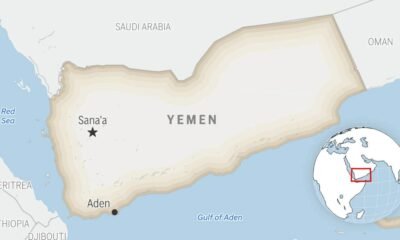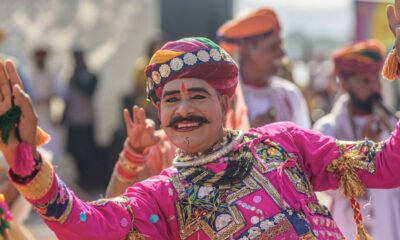Travel Guides & Articles
Government of India Confirms its Completion of More than Five Hundred Crore INR Worth of Tourism Projects in Jammu and Kashmir, Boosting New Regional Connectivity and Cultural Tourism

Tuesday, July 22, 2025
Centre Declares Completion of Big Tourism Infrastructure Projects in Jammu and Kashmir Under Swadesh Darshan Scheme
Reaching out to attract tourists and promote regional connectivities, the Central Government has announced the completion of six iconic tourism infrastructure projects in Jammu and Kashmir. These projects which are financed under the all-encompassing Swadesh Darshan Scheme, are a major step forward in bolstering travel infrastructure of The Union Territory of India at large, with a total approved amount of Rs 519.58 crore.
Transformative Projects Enhance Regional Connectivity in India
The projects, approved in fiscal 2016-17, for the promotion of infrastructure facilitating the unparallel growth of tourist inflow and connectivity in the regions. They are the major tourist circuits which covers various tourist places including Jammu, Srinagar, Pahalgam, Bhagwati Nagar, Anantnag, Salamabad Uri, Kargil, Leh, Rajouri, Shopian, Pulwama, Mantalai, Sudhmahadev, Zanskar Padum, Daksum, and Ranjit Sagar Dam.
The objective of formulating these circuits is intended to bring together lesser- known destinations on a tourism map, providing more sustainable and responsible tourism as well as encouraging the involvement of local communities, while being environment-sensitive.
Rebuilding Tourism After the 2014 Floods
One of the most impressive aspects of these finished projects is the amount of damaged infrastructure from 2014 floods that has been rehabbed and repurposed. The government has identified as one of its highest priorities, the replacement essential tourism infrastructure damaged or destroyed in the floods as part of the Prime Minister’s Development Package. This restoration was necessary for the resurrection of Jammu and Kashmir as a top tourist center, restoring visitor confidence and the local economy.
Sustainable Tourism and Economic Development
J-Tourism is not a luxury but a necessity to the economy of J&K as tourism provides employment directly to 2,15,800 people (Department of Tourism) and indirect employment to many more. The initiatives are to generate many direct and indirect jobs, for businesses such as those offering hospitality services, artisans and transport service providers, once the infrastructure has been completed.
As no formal assessment has been made by government into the number of jobs created directly as a result of the improvements in infrastructure, tourism stakeholders as a whole are enthusiastic about the developments. Better tourism infrastructure inevitably leads to more visitors and more spending – and that stimulates local commerce and adds to the long-term economic health.
Visitor Trends: Jammu and Kashmir is on the top spot
If we look at tourism trends from 2020 to 2024, data shared by the central government shows that Jammu and Kashmir will continue to be a favourite tourist destination. In this span of four years, the state recorded a staggering 7.66 crore total tourists, wherein a whopping 1.47 lakh were tourists from overseas – a number that showed not just potential, but the unflagging charm that this Himalayan paradise continues to wield over the domestic as well as foreign tourist.
The breathtaking natural beauty, rich culture and varied historical legacy combined with the diverse offerings of the region keep drawing visitors to the Virshaivaite stronghold, and maintain Jammu and Kashmir as a gem in India’s tourism treasure chest.
Progressive Development in Infrastructure facilities
Pointing towards Union Tourism Minister Gajendra Singh Shekhawat expressed confidence in these infrastructural achievements and the long-term strategic significance of these investments. New Delhi, March 05 (KMS): The minister said that it is only possible by strengthening regional connectivity and infrastructure, which will make J&K more easily accessible and attractive to travellers from across the world and lead to enhanced livelihood opportunities, across all sectors of economy.
Ensuring Future Growth and Sustainability
Going forward, what will be critical to glean from these completed projects by the government of India is how best to maintain the region’s fragile ecology and cultural identity through sustainable management. Now tourism stakeholders in Jammu and Kashmir have the onus to maintain the fine balance of increasing tourist influx and conservation of the environment and practicing responsible tourism.
Continued efforts should focus on an integrated approach to visitor management, enhanced waste management infrastructure, responsible resource use and sensitization of visiting public regarding environmental conservation. The continuity of tourism growth in the region will depend on how effectively these strategies are ultimately carried out.
Next Steps and Further Developments
Although success has been achieved through the implementation of these endeavors, further progress is still needed. Authorities should closely monitor the performance and the impact of these infrastructural facelifts, through quantitative and qualitative indicators (visit satisfaction, visit repetition and economic impact).
Additional investment in digital technology and safety and improving local hospitality standards will also be essential if Jammu and Kashmir is to sustain and grow its competitive advantage in a rapidly changing global tourism market.
Final Thoughts and Future Prospects for J&K and India
Successful execution of these Swadesh Darshan Scheme projects is the first step towards unlocking the tourism potential of Jammu and Kashmir. It has solid grounding in place, with refreshed infrastructure and strong connectivity, and is ready to accelerate its growth in visitors and global interest.
With these initiatives, as well as continued discussions with concerned parties and responsible management efforts, not only more tourists will come, but tourism will continue to help local economies, preserve culture and conserve nature for generations to come.
Travel Guides & Articles
Booking.com Reveals How Millennials and Gen Z are Reshaping India’s Travel Landscape

INDIA, 10th September 2025: Travel today is no longer just about reaching a destination. It’s about creating shared memories, strengthening bonds and investing in experiences that truly matter. With Indian travellers increasingly prioritising meaningful moments, mindful indulgence and shared adventures, one of the world’s leading online travel platforms, Booking.com reveals insights into the evolving psyche of Millennial and Gen Z travellers, who are seeking deeper connections and mindful indulgence more than ever before.
“Today’s Indian traveller is driven by a desire for meaningful connection. This is a behavioural shift that’s redefining what a journey is, whether it’s for the 68% of Gen Z planning solo trips to recharge or the 92% of Gen Z parents covering vacation costs for their families. They are balancing the thrill of discovery with the comfort of companionship. Travel is more than just about reaching a destination; it’s about investing in memories with your loved ones, something that is reflected across all generations. Booking.com is committed to empowering every traveller to find their perfect, personalised journey.” said Santosh Kumar, Regional Manager, South Asia at Booking.com.
Family, Friends & Beyond: The New Travel Companions
Indian travellers are reshaping the way they journey together, with millennials strengthening family bonds and Gen Z widening the circle to include parents, partners and friends.
Family first: 62% of Indian millennials prefer travelling with their immediate family (spouse/children), higher than the APAC average of 53%.
Paying it forward: A majority of travellers are willing to cover trip costs for their loved ones. 89% of millennials and 88% of Gen Z are willing to pay for a partner’s, parent’s trip or their children’ trip.
Friendship journeys: The circle is widening with 83% of Gen Z are willing to pay for friends’ holidays, compared to 75% of millennials and 58% of Gen X.
Responsible travellers: 92% of Gen Z parents have paid for vacations (fully/partly) for their family, ahead of millennials (84%), Gen X (71%) and Baby Boomers (66%).
These insights highlight how modern travel is deeply rooted in connection, care and shared experiences
Smart Splurges: Balancing Indulgence with Mindfulness
While Indian travellers across generations are showing a rising appetite for travel spend compared to their APAC counterparts – yet they remain sharply mindful of value and budgeting.
Spending surge: 42% of millennials and 89% of Gen Z in India plan to spend more on travel this year, above the 24% APAC average.
Gen X steps up: 35% of Indian Gen X expect to increase travel spend—more than double the 15% APAC average.
Splurge for memories: 65% of millennials and 57% of Gen Z admit they’d “lavishly blow their budget” for a truly unforgettable holiday.
Mindful choices: 82% of Gen Z and 88% of millennials say travel is a priority, but they are careful to find the best options within their budget.
Pocket-sized adventures: Both millennials (77%) and Gen Z (70%) believe taking multiple short trips is a smarter use of budget than one long holiday, reflecting a desire for more frequent getaways.
Curiosity Meets Comfort: Adventure with Assurance
Indian travellers are blending the desire for adventure with the need for safety and familiarity—seeking experiences that balance wellness, culture, and safety.
Solo escapes: 68% of Gen Z and 65% of millennials plan solo trips to relax and recharge.
Motivations differ: Gen Z are motivated by adventure (46%) and food (45%), while millennials lead towards cuisine (50%), cultural immersion (48%) and adventure (48%).
Safety first: A top priority for both millennials (72%) and Gen Z (66%) when choosing a destination, followed by value for money (millennials 66%, Gen Z 61%) and good weather (millennials 64%, Gen Z 61%).
Familiar comfort: The appeal of a trusted destination is strong, with nearly 70% of both generations planning to revisit a place they already know.
Indians across generations are making travel a mindful priority, seeking value through multiple shorter escapes and unforgettable experiences. Balancing new adventures with the reassurance of safety, culture and familiarity, they see journeys not just as trips but as investments in connection and meaningful discovery.
Travel Guides & Articles
Nepal Gen Z protests lead to travel chaos, Bengal’s Durga Puja takes heavy hit

The wave of student and youth protests in Nepal has snowballed into a major crisis, crippling normal life in Kathmandu and spilling across the border to India’s tourism sector.
The agitation began as a campaign against corruption but escalated sharply after the government imposed a social media ban, triggering violent clashes in the capital.
Police opened fire on demonstrators, leaving at least 19 dead, which further fuelled public anger. Under mounting pressure, the Nepalese government was forced to lift the ban and issue a late-night statement appealing for calm.
The unrest has cast a shadow over India’s Durga Puja holiday season, particularly in West Bengal, where Nepal is a popular tourist destination. Travel operators reported mass cancellations within hours of the violence breaking out.
“Over a hundred bookings were cancelled as soon as news of the unrest spread,” said Samrat Sanyal, General Secretary of the Himalayan Hospitality and Tourism Development Network (HHTDN). He added that cross-border traders, too, face mounting financial losses.
At border checkposts, drivers waiting for passengers have been left stranded after the Sashastra Seema Bal (SSB) issued a high alert, halting all vehicle crossings. Some locals have even expressed intent to join the protests, with one resident declaring, “The Gorkhas are not afraid.”
For many holidaymakers, the situation has thrown plans into disarray. Suman Ghosh, a banker from Kolkata, said he had already booked air tickets and hotels for his family but was now considering cancelling the trip.
“The prevailing situation is not safe for my family. I don’t know whether I will get my refund. My travel agent hasn’t responded,” he said.
Industry voices warn of deep losses during what is usually a peak travel period. Anil Punjabi, a member of the National Committee of the Travel Agents Federation of India, called the developments “disastrous for the tourism industry”, noting that tourism is “the first to be hit and the last to cure”.
He said Bengal typically sends 12,000 to 15,000 tourists to Nepal every Puja season, each spending around Rs 30,000 to Rs 35,000, but this year most are now seeking refunds or scrambling for alternatives.
The mood across the travel sector remains bleak, with operators ruling out recovery during the festive season. West Bengal Chief Minister Mamata Banerjee has voiced concern over the turmoil in Nepal and its impact on border districts, while stating that the Centre has yet to reach out to her government.
She urged residents to maintain peace along the border as uncertainty lingers over the neighbouring country.
– Ends
Travel Guides & Articles
Pilgrimage tourism boom: MakeMy report shows 19% growth in FY24-25; surge in premium stays

MUMBAI: Group travel, short stays and last-minute bookings, these are the trends that define the popular religious tourism segment with pilgrimage travel emerging as one of the fast-growing segments of India’s travel and tourism industry. “Accommodation bookings across 56 pilgrimage destinations grew by 19% in FY24-25,” according to online travel company MakeMyTrip (MMT) which tracked for pilgrimage travel in 2024-2025. “The pilgrimage travel trends highlight broad-based momentum, with 34 destinations recording double-digit growth and 15 destinations growing by over 25%, underscoring how spiritual journeys are becoming a powerful driver of travel demand,” the MMT report said.The breadth of growth across pilgrimage destinations can be seen in centres such as Prayagraj (Uttar Pradesh), Varanasi (Uttar Pradesh), Ayodhya (Uttar Pradesh), Puri (Odisha), Amritsar (Punjab) and Tirupati (Andhra Pradesh), which continue to grow. At the same time, places like Khatushyam Ji (Rajasthan), Omkareshwar (Madhya Pradesh) and Thiruchendur (Tamil Nadu) are also registering strong momentum, reflecting the widening canvas of spiritual travel in the country.“The strong growth in pilgrimage demand is also driving an aggressive expansion of accommodation supply across key destinations. Travellers are largely opting for short, purpose-driven stays, with more than half choosing single-night trips. At the same time, premiumisation is gaining momentum, bookings for rooms priced above ₹7,000 grew by over 20%” it saidRajesh Magow, Co-Founder and Group CEO, MakeMyTrip, said, “Pilgrimage Travel has always been part of our culture, but what we see now is its scale and consistency across the country. We are seeing steady growth, fuelled by stronger connectivity and Indians across all age groups and income segments planning pilgrimage-led trips. This growing demand is broadening traveller expectations and prompting the industry to innovate in ways that better serve the unique needs of the pilgrim traveller.”
Nearly 2 in 3 pilgrimage bookings made within a week of travel:
The late booking trend is characteristic of Indian travellers, cutting across all segments of travel. Pilgrimage travel, much like leisure, continues to be booked very close to the date of travel, with more than 63% of bookings made within six days of departure.
Pilgrimage travel characterized by short, purpose-led stays:
Pilgrimage travel remains defined by short, purpose-driven stays. More than half of all travellers (53%) opt for single-night visits, compared to 45% in leisure travel. Two-night stays make up nearly one-third (31%) of trips, while three-night stays account for just 11%. Longer durations of four nights or more together contribute less than 5% of bookings, in contrast to leisure travel, which shows a more even spread across multiple nights.
Group travel distinctly stronger in pilgrimage:
Group bookings form a much larger share of pilgrimage travel, with 47% of trips made in groups compared to 38.9% in leisure destinations. This underlines the collective character of pilgrimage journeys, where families, friends, and community groups often travel together, further reinforcing pilgrimage as a deeply shared experience.
High-value bookings in pilgrimage cities outpace leisure destinations:
While most pilgrimage accommodation bookings (71%) are for rooms priced below ₹4,500 per night, premiumisation is gaining clear momentum. In FY24-25, bookings for rooms in the ₹7,000–10,000 range grew by 24%, while those above ₹10,000 grew by 23%. In parallel, alternate accommodation options such as homestays and apartments have also gained traction, contributing nearly 10% of room night bookings in pilgrimage destinations.
Pilgrimage Travel Spurs Wave of New Hotels and Homestays:
Over the past three years, pilgrimage destinations have seen a sharp rise in accommodation supply. More than a third of all hotel rooms available today at these locations were launched during the past three years, with even faster growth in homestays, apartments, and hostels. The expansion of homestays reflects both new additions and existing properties coming online as hosts tap into rising demand. Premium supply has also scaled rapidly, 63% of the premium accommodation available today were launched during the same period, reflecting how businesses are actively investing to capture the demand in premium segment.
Travellers increasingly combine pilgrimage with leisure experiences:
In FY 2024-25, over half (52%) of all holiday package bookings on MakeMyTrip were made by travellers seeking pilgrimage-led destinations only. At the same time, nearly 48% of bookings were from travellers who sought a combination of pilgrimage as well as leisure destinations within the same holiday package. Taken together, these trends point to a shift, with increasing number of travellers blending spiritual journeys and leisure pursuits to create a more wholesome experience.
-

 Business2 weeks ago
Business2 weeks agoThe Guardian view on Trump and the Fed: independence is no substitute for accountability | Editorial
-
Tools & Platforms4 weeks ago
Building Trust in Military AI Starts with Opening the Black Box – War on the Rocks
-

 Ethics & Policy1 month ago
Ethics & Policy1 month agoSDAIA Supports Saudi Arabia’s Leadership in Shaping Global AI Ethics, Policy, and Research – وكالة الأنباء السعودية
-

 Events & Conferences4 months ago
Events & Conferences4 months agoJourney to 1000 models: Scaling Instagram’s recommendation system
-

 Jobs & Careers2 months ago
Jobs & Careers2 months agoMumbai-based Perplexity Alternative Has 60k+ Users Without Funding
-

 Podcasts & Talks2 months ago
Podcasts & Talks2 months agoHappy 4th of July! 🎆 Made with Veo 3 in Gemini
-

 Education2 months ago
Education2 months agoMacron says UK and France have duty to tackle illegal migration ‘with humanity, solidarity and firmness’ – UK politics live | Politics
-

 Education2 months ago
Education2 months agoVEX Robotics launches AI-powered classroom robotics system
-

 Funding & Business2 months ago
Funding & Business2 months agoKayak and Expedia race to build AI travel agents that turn social posts into itineraries
-

 Podcasts & Talks2 months ago
Podcasts & Talks2 months agoOpenAI 🤝 @teamganassi





















